
“They would have killed without compunction.” This quotation is taken from Mr Bunting at War. Written in 1942, Robert Greenwood’s novel describes the wartime experience of an ‘ordinary’ British civilian. It stems from a journey Mr Bunting has on a train where he is surrounded by people who have volunteered for various civilian organisations. A majority, though, are members of the Home Guard, who Bunting considers are “preparing grimly to defend things they had cherished all their lives and meant to stick to”.
This represents the reality of the Home Guard, much more so than the BBC series Dad’s Army, which too many people see as an accurate ‘documentary’ rather than the comedy it actually is. The Home Guard was not made up of ill-equipped ‘Corporal Jones’ types, but well-armed men, many of whom had combat experience from the First World War and were still in their 30s or 40s, with many others under 30 years old in reserved occupations that were vital to the nation’s war effort.
Their roles have also been misunderstood and underepresented over the past 80 years, with many aspects almost completely forgotten. Even the origins of the Home Guard have largely been misunderstood. Before Churchill had got his feet under the table at 10 Downing Street, he was writing to the Lord Privy Seal Sir Samuel Hoare about creating a civilian defensive force, even using the term ‘Home Guard’. Just a month into the war, before the threat of invasion had raised its head, he wrote:
“Why do we not form a Home Guard of half-a-million men over 40 (if they like to volunteer) and put all our elder stars at the head and in the structure of these new formations? Let these 500,000 men come along and push the young and active out of their home billets. If uniforms are lacking, a brassard would suffice, and I am assured there are plenty of rifles at any rate.”
This story is from the Issue 136 edition of History of War.
Start your 7-day Magzter GOLD free trial to access thousands of curated premium stories, and 9,000+ magazines and newspapers.
Already a subscriber ? Sign In
This story is from the Issue 136 edition of History of War.
Start your 7-day Magzter GOLD free trial to access thousands of curated premium stories, and 9,000+ magazines and newspapers.
Already a subscriber? Sign In

NAUMACHIA TRUTH BEHIND ROME'S GLADIATOR SEA BATTLES
In their quest for evermore novel and bloody entertainment, the Romans staged enormous naval fights on artificial lakes
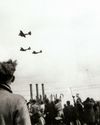
OPERATION MANNA
In late April 1945, millions of Dutch civilians were starving as Nazi retribution for the failed Operation Market Garden cut off supplies. eet as In response, Allied bombers launched a risky mission to air-drop food
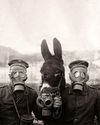
GASSING HITLER
Just a month before the end of WWI, the future Fuhrer was blinded by a British shell and invalided away from the frontline. Over a century later, has the artillery brigade that launched the fateful attack finally been identified?
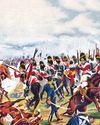
SALAMANCA
After years of largely defensive campaigning, Lieutenant General Arthur Wellesley went on the offensive against a French invasion of Andalusia

HUMBERT 'ROCKY'VERSACE
Early in the Vietnam War, a dedicated US Special Forces officer defied his merciless Viet Cong captors and inspired his fellow POWs to survive
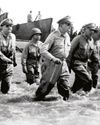
LEYTE 1944 SINKING THE RISING SUN
One of the more difficult island campaigns in WWII's Pacific Theatre saw a brutal months-long fight that exhausted Japan’s military strength

MAD DAWN
How technology transformed strategic thinking and military doctrine from the Cold War to the current day
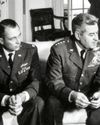
BRUSHES WITH ARMAGEDDON
Humanity came close to self-annihilation with the Cuban Missile Crisis, Broken Arrows’ and other nuclear near misses
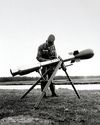
THE DEADLY RACE
How the road to peace led to an arms contest between the USA and USSR, with prototypes, proliferation and the world’s biggest bomb

THE MANHATTAN PROJECT
Einstein, Oppenheimer and the race to beat Hitler to the bomb. How a science project in the desert helped win a war